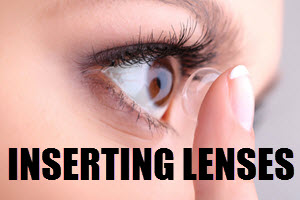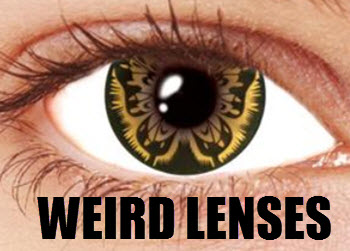Understanding Decorative Lenses
Decorative lenses, often referred to as cosmetic or costume lenses, have gained significant popularity in recent times. These lenses serve an aesthetic purpose, primarily designed to alter the appearance of the eyes, rather than for correcting any vision-related issues. Individuals are drawn to these lenses for a variety of reasons, particularly for events or occasions where they want to create a memorable impression. These occasions can range from casual parties and themed events to professional gatherings where a unique look could add to the persona being portrayed.
With an increase in their popularity, it becomes crucial to delve deeper into what decorative lenses are, the various types available, their safety protocols, and how best to use them to achieve the desired effect without compromising eye health.
Types of Decorative Lenses
Decorative lenses are available in a myriad of designs and color schemes, providing users with a broad spectrum of options to suit different needs and preferences. Understanding the different types of decorative lenses can help in making an informed choice:
1. Color Enhancement Lenses: These lenses are crafted to boost the natural color of your eyes. They are semi-translucent, enabling them to blend subtly with your original eye color while enhancing it. This makes them an excellent choice for those looking for a natural yet noticeable change.
2. Visibility-Tinted Lenses: Mainly intended to help with handling, these lenses are lightly tinted. The subtle tint not only makes them easier to manage but may also slightly change the eye color without making it apparent, thus catering to those looking for minimal aesthetic alteration.
3. Theatrical or Costume Lenses: These lenses are specifically designed for substantial and dramatic changes. Whether you are aiming for cat-like eyes, vampire styles, or any unique patterns that suit a theatrical performance or costume, these lenses cater to robust visual transformations.
Safety and Regulation
It is of utmost importance to treat decorative lenses with the same level of care and caution as corrective vision lenses. A common misconception is that these lenses do not require any form of prescription because they do not have a corrective function. However, this is not the case in many regions where laws mandate that decorative lenses be regulated similarly to corrective lenses. Consequently, a prescription from a certified eye care professional is often needed to ensure these lenses are suitable for wearers.
Proper Eye Care Practices
Caring for your eyes while using decorative lenses involves adhering to recommended eye care practices, akin to those followed with standard contact lenses. Here are some practices to keep in mind:
- Ensure a professional fitting for your lenses. Each person’s eyes are unique, and an eye care professional can measure them to ensure the lenses fit snugly and comfortably. This reduces the risk of complications that could arise from poor-fitting lenses.
- Only purchase decorative lenses from reliable and reputable sources, verifying that they meet established safety standards. Avoid purchasing from unverified sellers or online platforms that do not provide regulatory oversight.
- Follow the care instructions outlined by the lens manufacturer diligently. This includes proper cleaning, storage solutions, avoiding sharing lenses, and disposing of them as per the recommended guidelines.
Considerations for Special Events
If you’re considering decorative lenses for special occasions, several factors should guide your decision. The length and nature of the event play vital roles in determining which lens type would be most appropriate. For events that are brief, ensure that the lenses you choose are breathable and comfortable over that time. Matching your lenses not only to your outfit but to the entire theme of the event can add to the desired effect and experience.
For those who seek more comprehensive information concerning the precautions and guidelines about decorative lenses, visiting the relevant authorities’ websites, such as the Food and Drug Administration (FDA), can provide further reassurance.
In conclusion, while decorative lenses can indeed enhance your aesthetic appeal, especially during special events or occasions, it is paramount to prioritize responsibility in their usage. Adhering to professional guidance, understanding the need for prescriptions even for cosmetic lenses, and following safety protocols is vital in safeguarding eye health. Employing these measures can ensure that wearers enjoy the aesthetic benefits of decorative lenses responsibly, thereby making the experience both enjoyable and safe.



 Cosmetic contact lenses
Cosmetic contact lenses